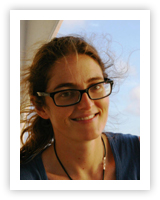What is the Coral Triangle Atlas and who can use It?
What is the Coral Triangle Atlas?
The Coral Triangle Atlas (CT Atlas) is an online GIS database, providing governments, NGOs and researchers with a view of spatial data at the regional scale. Data on fisheries, biodiversity, natural resources, and socioeconomics have been collected for decades by scientists and managers working in different parts of the Coral Triangle region. However, to date, little of this information has been aggregated into region-wide layers to provide an overview and support management planning and decision-making at a regional level.
Who can use the Coral Triangle Atlas?
The CT Atlas is open to the public which means anyone can access it and use it after signing in. It was developed with both non GIS experts and GIS experts in mind. Novices to GIS can use the online interface to visualize information and even create their own maps. GIS experts who want to work with their own softwares can download the data from the database.
How can you contribute to the Coral Triangle Atlas?
The Coral Triangle Atlas also welcomes organizations desiring to share their data. By contributing to the Coral Triangle Atlas, NGO partners, governments and managers are helping to strengthen the effectiveness of conservation activities in the Coral Triangle through improved information flow. You can contact the WorldFish team by writing either to Stanley Tan at s.l.tan@cgiar.org or the project leader, Annick Cros at acros@tnc.org. You can also post on the forum and we will get back to you.
What kind of Data is Available in the Coral Triangle Atlas?
The Coral Triangle Atlas focuses on data that will help managers and scientists to better plan for marine resource conservation. There is information such as
• base layers: countries, ecoregions, seascape
• management units: Marine Protected AreasHabitats: Coral Reefs, Mangroves, Seagrass
And many other layers such as biodiversity, threats, oceanography…
The Database is always growing and we invite you to regularly check it and contribute to it. No data set is too small or too coarse for us.
Can I use the Coral Triangle Atlas to generate maps for my site?
Yes, absolutely. The interactive Map allows you to select the data you would like to see on your map and to save it (simply click on the “save” icon). If the information you want on the map isn’t available as one of the layers then you can contact us or post a request on the forum and the CT Atlas team will make the map for you!
How Will the Coral Triangle Atlas help in marine conservation activities in the region?
The Coral Triangle Atlas will improve the efficiency of management and conservation planning in the region by giving researchers and managers access to spatial information while encouraging them to share their data to complete the gaps, therefore reducing duplicate data collection efforts and providing the most complete and most current data available. The CT Atlas will be particularly useful in the design and planning of marine protected areas and marine protected area networks throughout the region.
With access to the region’s best data sets, scientists and managers will have the tools needed to conduct complex analyses and measure the result of conservation activities designed to ensure the sustainability of the Coral Triangle’s marine resources and the millions of people who depend on it for food, livelihood and way of life.
The Coral Triangle Atlas also works to inform the Coral Triangle Initiative on Coral Reefs, Fisheries and Food Security (CTI-CFF) – the multilateral partnership formed by the six Coral Triangle countries to address the urgent threats facing the Coral Triangle.

Annick Cros
CT Atlas Program Coordinator
The Nature Conservancy
acros@tnc.org
